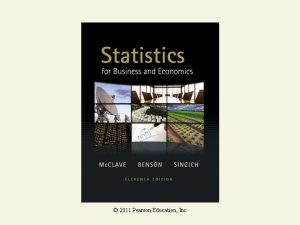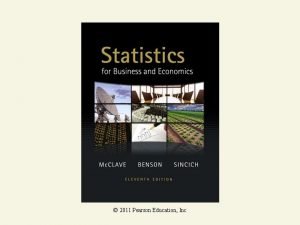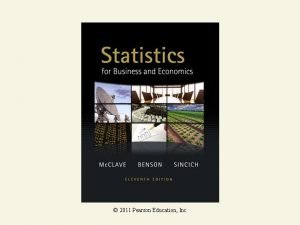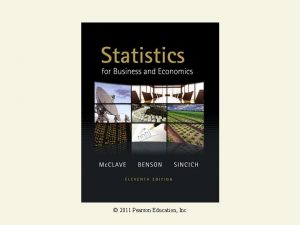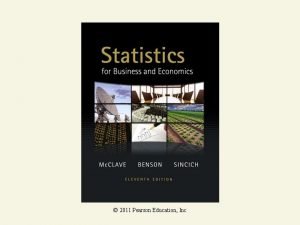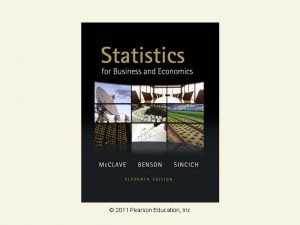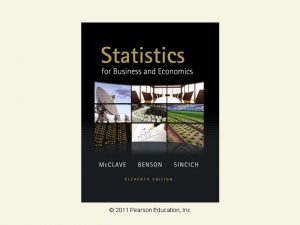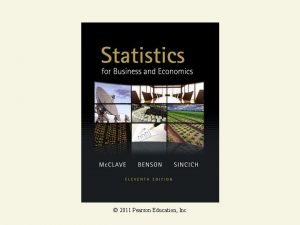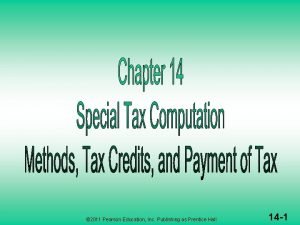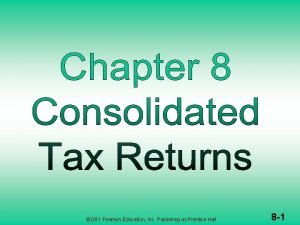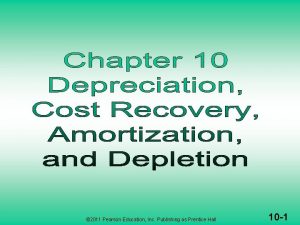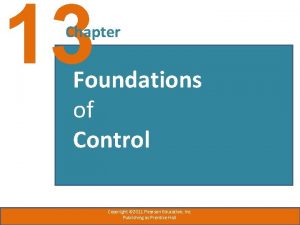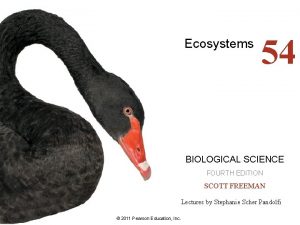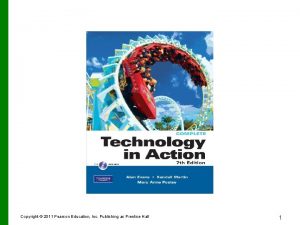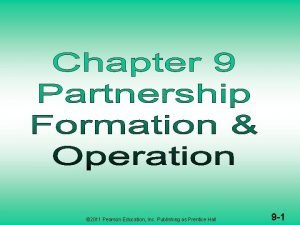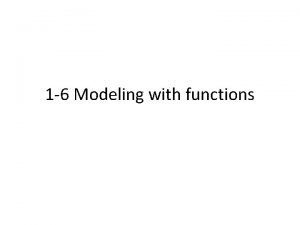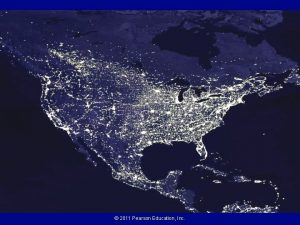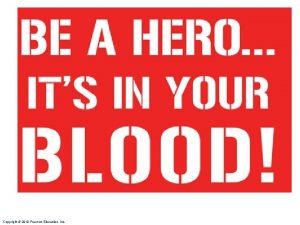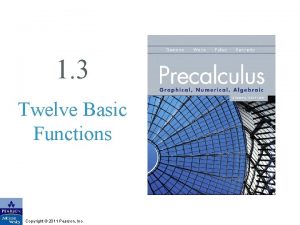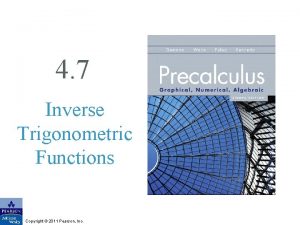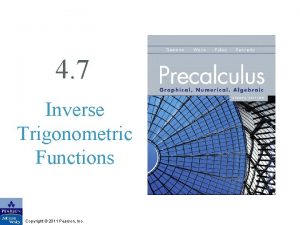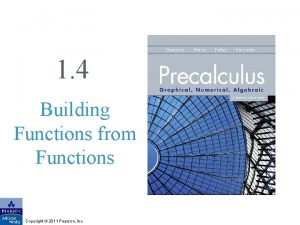1 7 Modeling with Functions Copyright 2011 Pearson






















- Slides: 22

1. 7 Modeling with Functions Copyright © 2011 Pearson, Inc.

What you’ll learn about n n Functions from Formulas Functions from Graphs Functions from Verbal Descriptions Functions from Data … and why Using a function to model a variable under observation in terms of another variable often allows one to make predictions in practical situations, such as predicting the future growth of a business based on data. Copyright © 2011 Pearson, Inc. 2

Example A Maximum Value Problem Copyright © 2011 Pearson, Inc. 3

Solution Copyright © 2011 Pearson, Inc. 4

Solution Copyright © 2011 Pearson, Inc. 5

Solution Copyright © 2011 Pearson, Inc. 6

Solution Copyright © 2011 Pearson, Inc. 7

Example Finding the Model and Solving Grain is leaking through a hole in a storage bin at a constant rate of 5 cubic inches per minute. The grain forms a cone-shaped pile on the ground below. As it grows, the height of the cone always remains equal to its radius. If the cone is one foot tall now, how tall will it be in one hour? Copyright © 2011 Pearson, Inc. 8

Solution Copyright © 2011 Pearson, Inc. 9

Constructing a Function from Data Given a set of data points of the form (x, y), to construct a formula that approximates y as a function of x: 1. Make a scatter plot of the data points. The points do not need to pass the vertical line test. 2. Determine from the shape of the plot whether the points seem to follow the graph of a familiar type of function (line, parabola, cubic, sine curve, etc. ). 3. Transform a basic function of that type to fit the points as closely as possible. Copyright © 2011 Pearson, Inc. 10

Example Curve-Fitting with Technology The table shows that the number of patent applications in the United States increased from 1993 to 2003. Find both a linear and a quadratic regression model for this data. Which appears to be the better model of the data? Copyright © 2011 Pearson, Inc. 11

Solution Use a grapher to compute the linear and quadratic regression, using x = 0 for 1993, x = 1 for 1994, … The linear regression model is y = 19. 23 x + 157. 84. The quadratic regression model is y = 0. 7894 x 2 + 9. 7573 x + 178. 36. The quadratic regression equation appears to model the data better than the linear regression equation. Copyright © 2011 Pearson, Inc. 12

Functions Copyright © 2011 Pearson, Inc. 13

Functions (cont’d) Copyright © 2011 Pearson, Inc. 14

Quick Review Copyright © 2011 Pearson, Inc. 15

Quick Review Solutions Copyright © 2011 Pearson, Inc. 16

Chapter Test Copyright © 2011 Pearson, Inc. 17

Chapter Test Copyright © 2011 Pearson, Inc. 18

Chapter Test Copyright © 2011 Pearson, Inc. 19

Chapter Test Solutions Copyright © 2011 Pearson, Inc. 20

Chapter Test Solutions Copyright © 2011 Pearson, Inc. 21

Chapter Test Solutions Copyright © 2011 Pearson, Inc. 22
 Helen erickson nursing theory
Helen erickson nursing theory Relational vs dimensional data modeling
Relational vs dimensional data modeling Pearson education 2011
Pearson education 2011 2011 pearson education inc
2011 pearson education inc 2011 pearson education inc
2011 pearson education inc 2011 pearson education inc
2011 pearson education inc 2011 pearson education inc
2011 pearson education inc 2011 pearson education inc
2011 pearson education inc 2011 pearson education inc
2011 pearson education inc 2011 pearson education inc
2011 pearson education inc 2011 pearson education inc
2011 pearson education inc 2011 pearson education inc
2011 pearson education inc Pearson education inc publishing as pearson prentice hall
Pearson education inc publishing as pearson prentice hall 2011 pearson education inc
2011 pearson education inc Pearson education inc. publishing as prentice hall
Pearson education inc. publishing as prentice hall 2011 pearson education
2011 pearson education 2011 pearson education inc biology
2011 pearson education inc biology 2011 pearson education inc
2011 pearson education inc Chegg
Chegg Pearson education inc publishing
Pearson education inc publishing 2011 pearson education inc
2011 pearson education inc 2011 pearson education inc
2011 pearson education inc Pearson education limited 2017
Pearson education limited 2017



